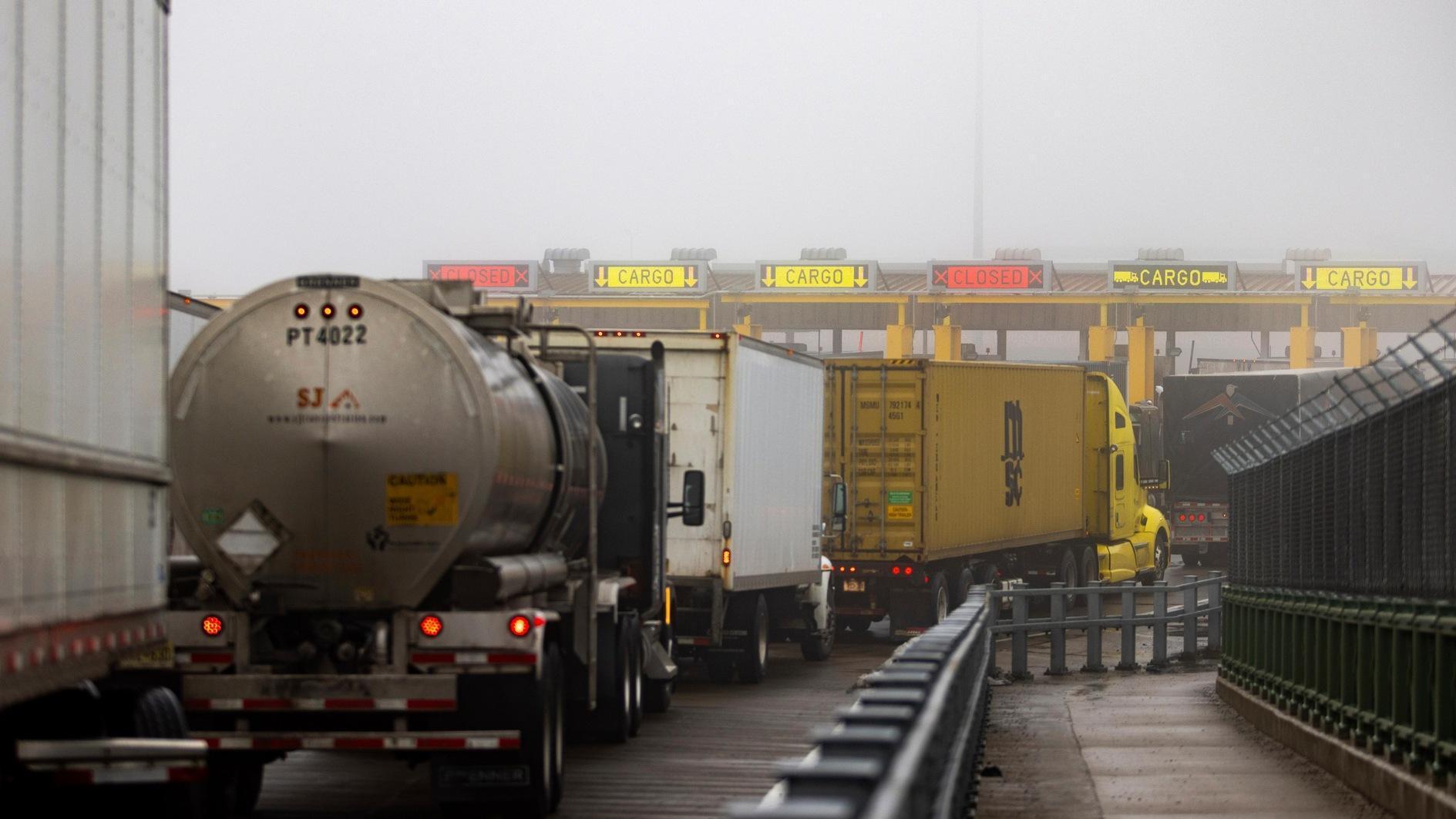Trump tariffs: What's been done and what is to come?
WASHINGTON

Trucks wait to cross the United States border on the Peace Bridge, Thursday, Feb. 27, 2025.
U.S. President Donald Trump threatened on March 13 to apply 200-percent tariffs on wine, champagne and other alcoholic drinks from France and other EU countries, in the latest twist of an escalating trade war.
Trump's threat to impose the huge tariffs on alcoholic drinks imported from EU countries would be a major blow to Europe's spirits makers.
Europe exported almost $5.2 billion worth of wine and champagne to the United States in 2023.
Trump's threat was a response to the EU's unveiling of tariffs on $28 billion in U.S. goods, starting in stages from April, which include bourbon, boats and motorbikes.
The EU's duties were in retaliation for 25 percent U.S. tariffs on steel and aluminium that came into force on March 12 and hit every country that exports the metals.
Trump's goal is to protect the declining U.S. steel industry as it faces growing competition, especially from Asia.
The U.S. imports around half the steel and aluminium used in the country to make items ranging from cars and planes to soft-drink cans.
Canada is the leading supplier of steel to the U.S., followed by Brazil then the EU.
Canada hit back with additional tariffs on almost $21 billion worth of imports from the United States, including steel and aluminium products, along with goods as varied as computers and sports equipment.
But incoming Prime Minister Mark Carney said he was ready to negotiate directly with Trump a renewed trade accord to avoid further economic tussling.
Trump unveiled 25-percent tariffs on Canadian and Mexican goods on Feb.1, with a lower rate of 10 percent for Canadian oil.
But hours before they were due to take effect on Feb. 4, Trump agreed to delay them for a month.
Fast-forward to March 4: the tariffs came into force, hitting imports from Mexico such as avocado or tomatoes and Canadian goods such as lumber.
Three days later, Trump gave the two countries another one-month delay.
Trump has not given China such breaks. It is the country with which the United States has the biggest trade deficit, at more than $295 billion last year.
Ten-percent tariffs on goods from the country considered the world's factory came into effect on Feb. 4, and they were increased to 20 percent on March 4.
Beijing retaliated, imposing 10- and 15-percent levies on a range of agricultural imports from the United States from soybeans and corn to chicken and beef.
Trump has said that products from the 27-nation European Union would be hit with a tariff of 25 percent, claiming that the bloc has "taken advantage of us."
The EU, which has a $50-billion trade surplus with the United States, has vowed to retaliate with proportionate countermeasures.
Trump said on March 12: "We're going to win that financial battle."
Trump has also signed plans for sweeping "reciprocal tariffs" that could hit both allies and adversaries by April 2.
The levies would be tailored to each U.S. trading partner and take into account the tariffs they impose on American goods, alongside taxes the White House calls discriminatory, such as value-added taxes.
Trump has said tariffs on automobiles, semiconductors and pharmaceuticals could come as early as April 2, with a rate of around 25 percent.
For computer chips and pharmaceuticals, he said they could "go very substantially higher over (the) course of a year".
















